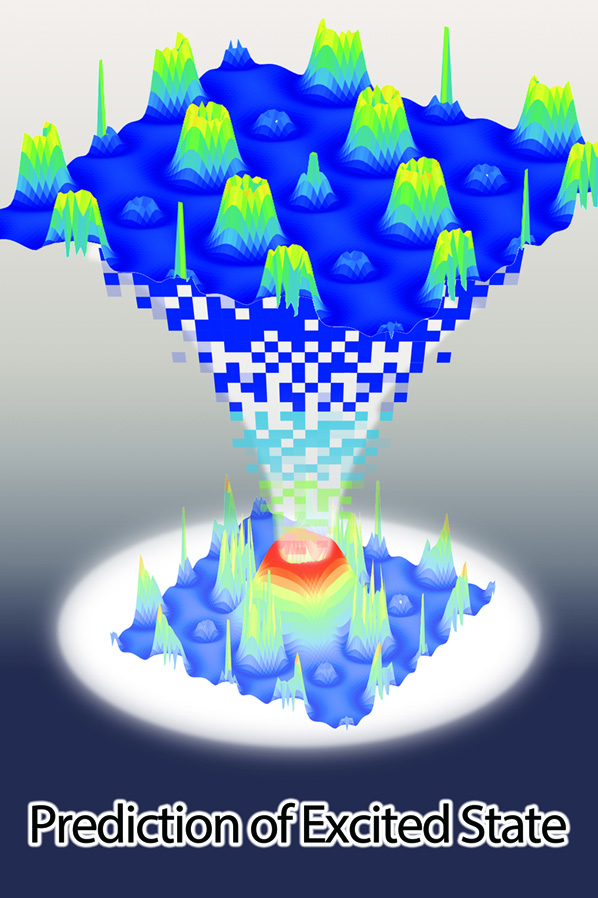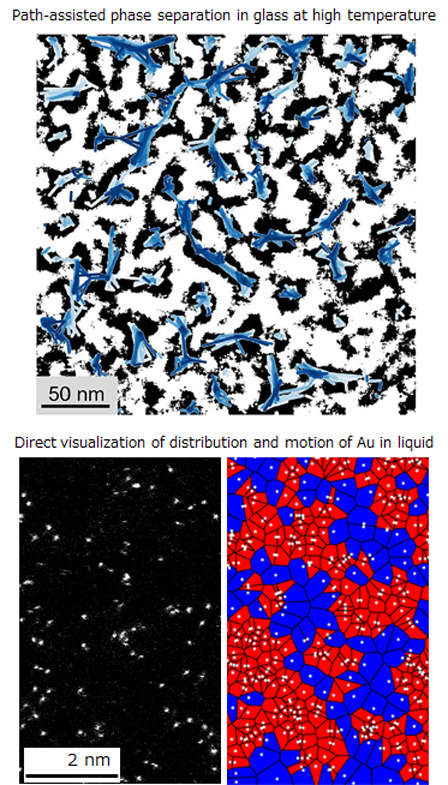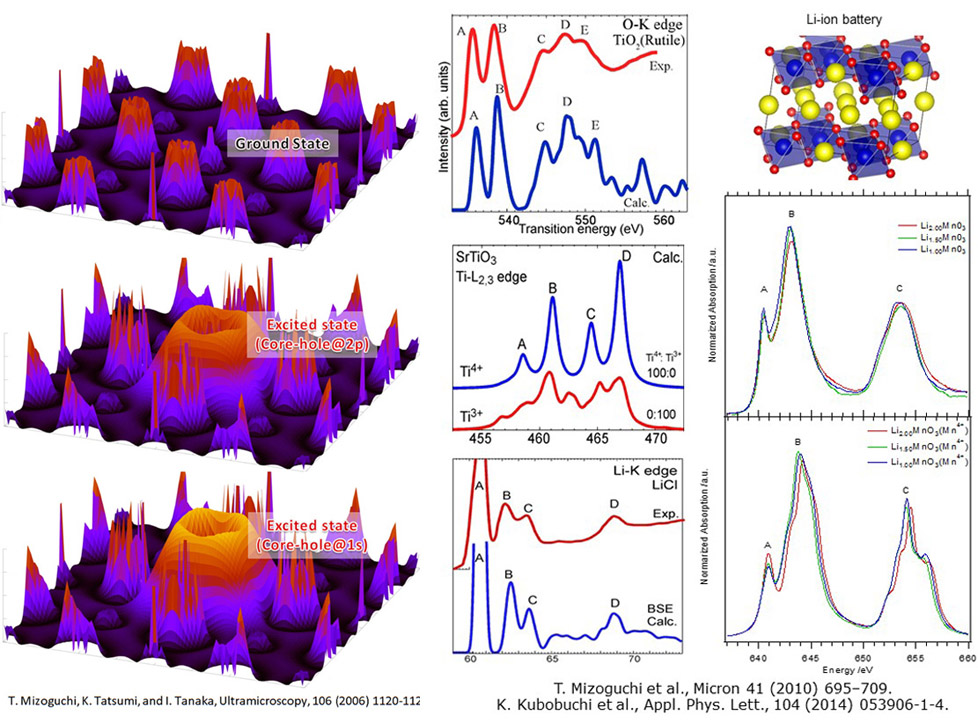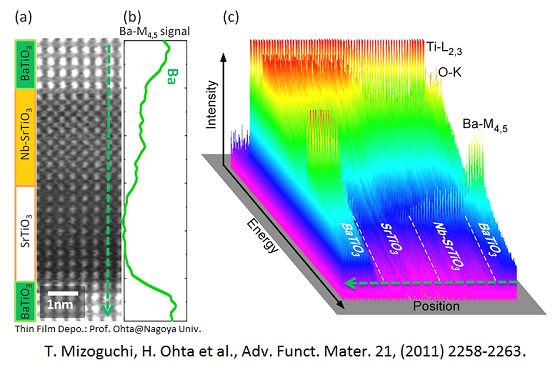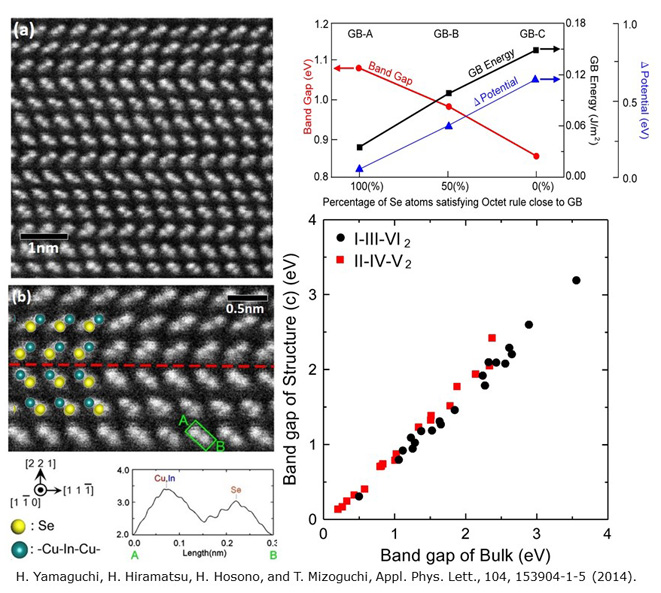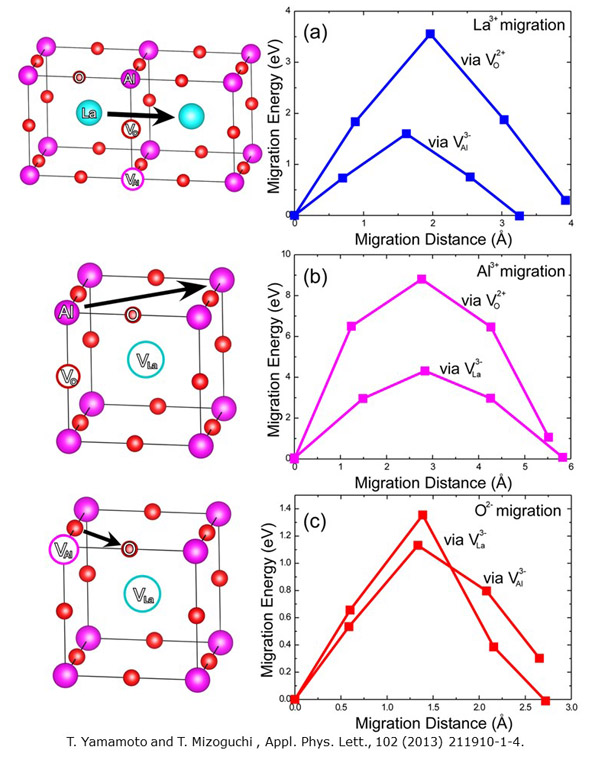Research
Data-driven materials research
Data-driven materials science is attracted great attention. We are developing
artificial intelligence (AI) using machine learning and applied the AI to materials researches as follows.
1) Acceleration of interface structure searching
2) Prediction of interface properties
3) ELNES/XANES informatics for predicting materials properties
4) Prediction of excited state from ground state using AI
5) Prediction of surface properties using machine larning
For instance, we have achieveed more than 10,000 times higher efficiency for determining the interface structures
using our machine learing method.
Keywords:Data-driven, machine learning, artificial intelligence (AI), materials informatics, interface, surface.
"Learning excited states from ground states by using an artificial neural network
S. Kiyohara, M. Tsubaki, and T. Mizoguchi, npj Comp. Mater., 6 (2020) 68-1-6. here
"(Invited Review) Machine learning applications for ELNES/XANES "
T. Mizoguchi and S. Kiyohara, Microscopy 69 (2020) 92-109. here
"Prediction of interface structures and energies via virtual screening"
S. Kiyohara, H. Oda, T. Miyata, and T. Mizoguchi, Science Adv., 2 (2016) e1600746-1-7. here
Atomic-level investigation of glass, liquid, gas, and soft-matters
Glass, gas, liquid, and soft materials play crucial roles in our industrial and living activities.
On the other hand, investigation of those materials with high spatial resolution has not been achieved due to their complex structures.
We are developing and applying atomic-resolution electron microscopy, spectroscopy, and theoretical calculations
for glass, gas, liquid, and soft materials.
Keywords: glass, gaseous molecule, liquid, ionic liquid, atomic resolution TEM, STEM, and EELS.
"In situ observation of the dynamics in the middle stage of spinodal decomposition of a silicate glass via scanning transmission electron microscopy"
K. Nakazawa, S. Amma, and T. Mizoguchi, Acta Mater. 200 (2020) 720-726. here
"Real-space analysis of diffusion behavior and activation energy of individual monatomic ions in a liquid"
T. Miyata, F. Uesugi, and T. Mizoguchi, Science Advances, 3 (2017) e1701546-1-5. here
"Estimation of the molecular vibration of gases using electron microscopy"
H. Katsukura, T. Miyata, M. Shirai, H. Matsumoto, and T. Mizoguchi, Scientific Reports, 7 (2017), 16434-1-9. here
"An estimation of molecular dynamic behaviour in a liquid using core-loss spectroscopy"
Y. Matsui, K. Seki, A. Hibara, T. Mizoguchi, Scientific Reports, 3 (2013) 3503-1-7. here
Developing theoretical calculation of core-loss spectroscopy (ELNES/XANES)
Core-loss spectroscopy using electron or X-ray (ELNES/XANES) reflects the electron
a transition from a core-orbital to conduction bands. Their spectral features can provide
information on atomic and electronic structures of selected elements. Especially, ELNES and XANES
can achieve atomic-level spatial resolution, nanosecond level temporal resolution, and ppm/ppb-level high sensitivity
ELNES and XANES are quite powerful methods for materials researchers. On the other hand, theoretical calculation
is mandatory to interpret those spectra. We are developing one, two, and multi-particle ELNES/XANES calculation
method and applied it to materials researchers.
Keywords: ELNES, EELS, XANES, NEXAFS, XAFS, first-principles calculation, exciton, BSE, multiparticle
"Basics and Applications of ELNES calculation" [Invited Review]
H. Ikeno and T. Mizoguchi, Microscopy, 66 (2017) 305–327.
"Excitonic, vibrational, and van der Waals interactions in electron energy loss spectroscopy"[Invited Manuscript]
T. Mizoguchi, T. Miyata, and W. Olovsson, Ultramicroscopy, 180 (2017) 93-103.
"Strong excitonic interactions in the oxygen K-edge of perovskite oxides"
K. Tomita, T. Miyata, W. Olovsson, and T. Mizoguchi, Ultramicroscopy, 178 (2017) 105-111.
"Core–Excitonic Interaction in Sodium L2,3 Edge Structure Investigated Using the Bethe-Salpeter Equation"
K. Tomita, T. Miyata, W. Olovsson, and T. Mizoguchi, J. Phys. Chem. C, 120 (2016) 9036-9042.
"Theoretical ELNES: one particle and many particle calculations"[Invited Review]
T. Mizoguchi, W. Olovsson, H. Ikeno, and I. Tanaka, Micron 41 (2010) 695–709
Atomic-resolution materials research using "Ultimate analysis"
STEM-ELNES has been known to be an "ultimate analysis" because it achieved
atomic resolution analysis of atomic configurations and chemical bondings.
We are applying the Ultimate analysis to glass, battery, photovoltaic materials to achieve materials design.
Keywords:Glass, battery, photovoltaic cell, superlattice
"Atomic Scale Identification of Individual Lanthanide Dopants in Optical Glass Fiber"
T. Mizoguchi et al., ACS Nano, 7 (2013) 5058-5063.
"Controlling interface intermixing and property of SrTiO3 based superlattices"
T. Mizoguchi, H. Ohta et al., Adv. Funct. Mater. 21, (2011) 2258–2263.
"Site dependence and Peak assignment of YBa2Cu3O7 O-K ELNES"
T. Mizoguchi et al.,Phys. Rev. B, 77 (2008) 024504-1-5.
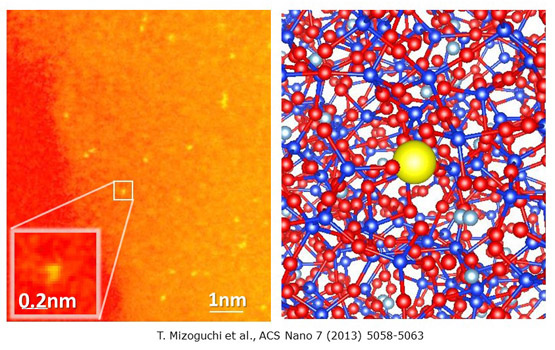
Materials design of energy materials
Interface plays crucial roles for many energy materials including photovoltaic cell,
fuel cell, and battery. We are applying atomic resolution analysis, DFT-simulation, and
informatics approach to those energy materials, to investigate the structure-property
relationships.
Keyword:Photovoltaic cell, fuel cell, Li-ion battery
"Defect formation energetics at the grain boundary in CuInSe2 using first-principles calculations"
H. Yamaguchi and T. Mizoguchi, J. Ceram. Soc. Jpn, 122 (2014) 469-472.
"The atomic structure, band gap, and electrostatic potential at the (112)[1-10] twin grain boundary of CuInSe2"
H. Yamaguchi, H. Hiramatsu, H. Hosono, and T. Mizoguchi, Appl. Phys. Lett., 104, 153904-1-5 (2014).
"A valence state evaluation of a positive electrode material in a Li-ion battery with first-principles K- and L-edge XANES spectral simulations and resonance photoelectron spectroscopy"
K. Kubobuchi, M. Mogi, M. Matsumoto, T. Baba, C. Sato, T. Yamamoto, T. Mizoguchi, H. Imai, J. Appl. Phys., 120, 142125-1-13 (2016)
"Mn L2,3-edge X-ray absorption spectroscopic studies on charge-discharge mechanism analysis of Li2MnO3"
K. Kubobuchi, H. Ikeno, M. Mogi, I. Tanaka, H. Imai, and T. Mizoguchi
Appl. Phys. Lett., 104 (2014) 053906-1-4.
Formation and dynamics of defects in advanced materials
Due to the recent progress of computational speed, we can treat large systems containing
lattice defects in the computer. We are applying the state of the art simulations to the defects,
including vacancy, dopants, surface, and interface, to understand the formation and dynamic behaviors
of defects.
Keywords: Perovskite materials, ceramics, oxides, defect, surface, and first principles calculation.
"First-principles study on migration mechanism in SrTiO3"
T. Mizoguchi, N. Takahashi, HS. Lee, Appl. Phys. Lett. 98 (2011) 091909
"Defect energetics in LaAlO3 polymorphs: A first principles study"
T. Yamamoto and T. Mizoguchi, Phys. Rev. B, 86 (2012) 094117.
"The influence of neighboring vacancies and their charge state on the atomic migration of LaAlO3"
T. Yamamoto and T. Mizoguchi, Appl. Phys. Lett., 102 (2013) 211910-1-4.

